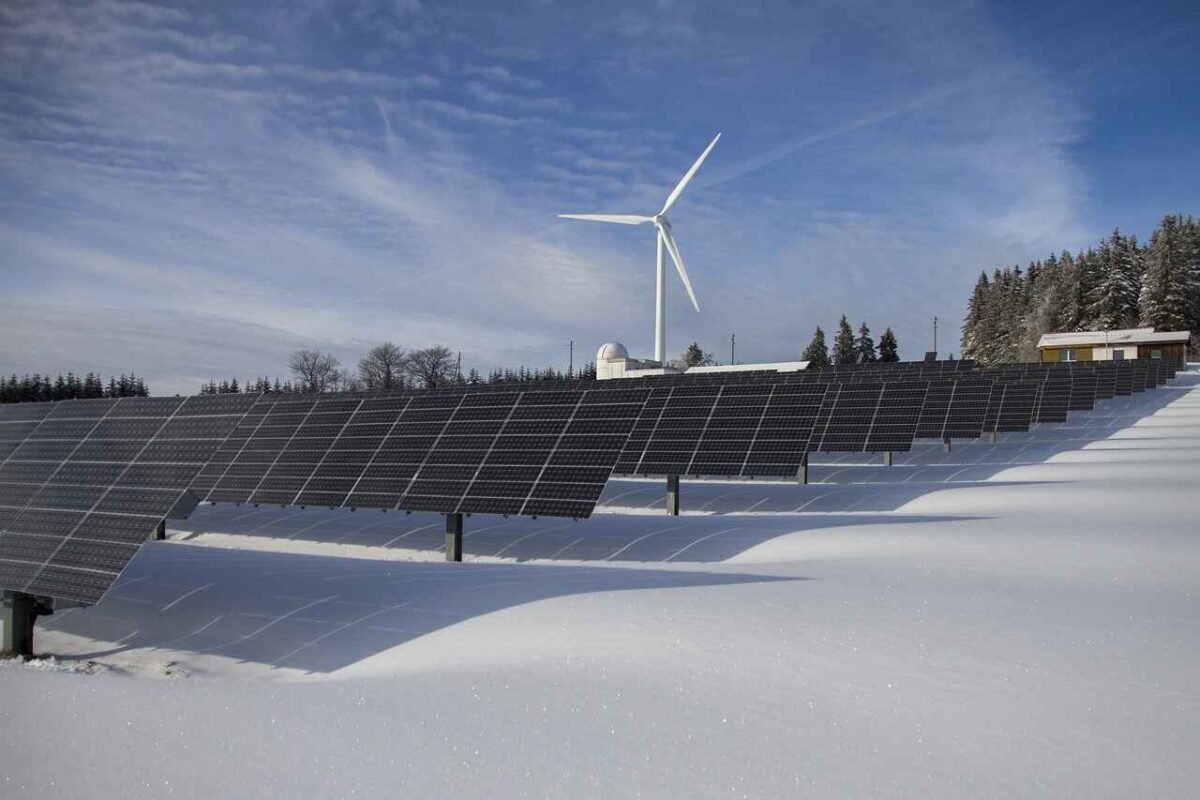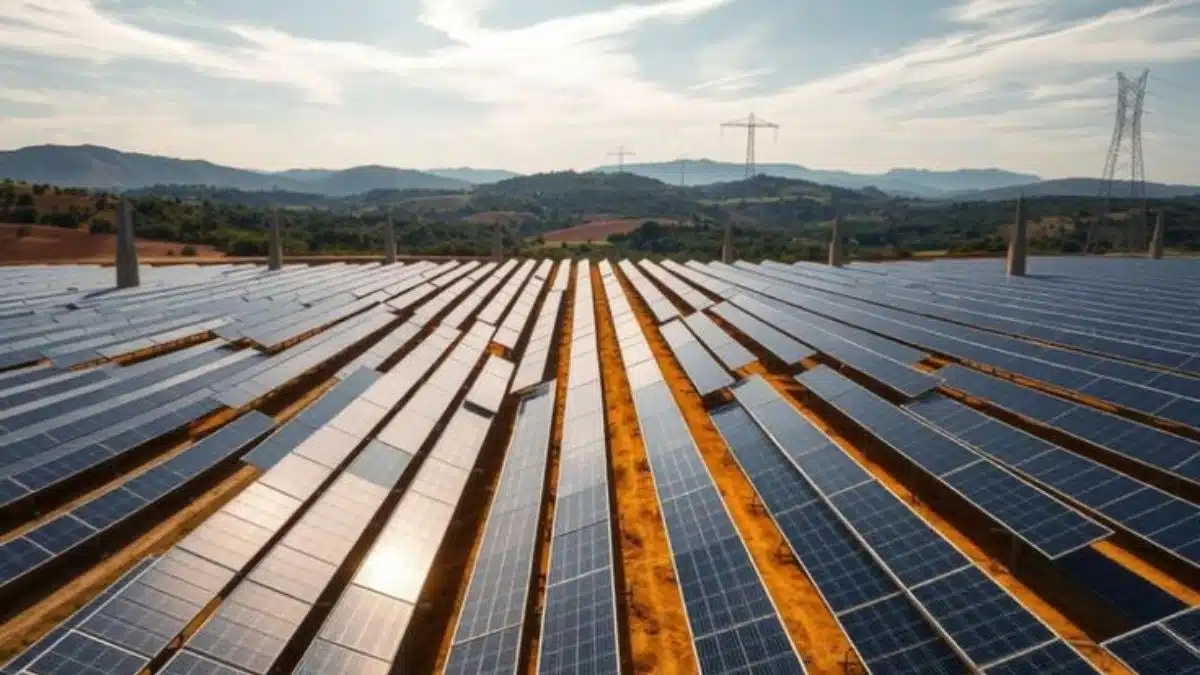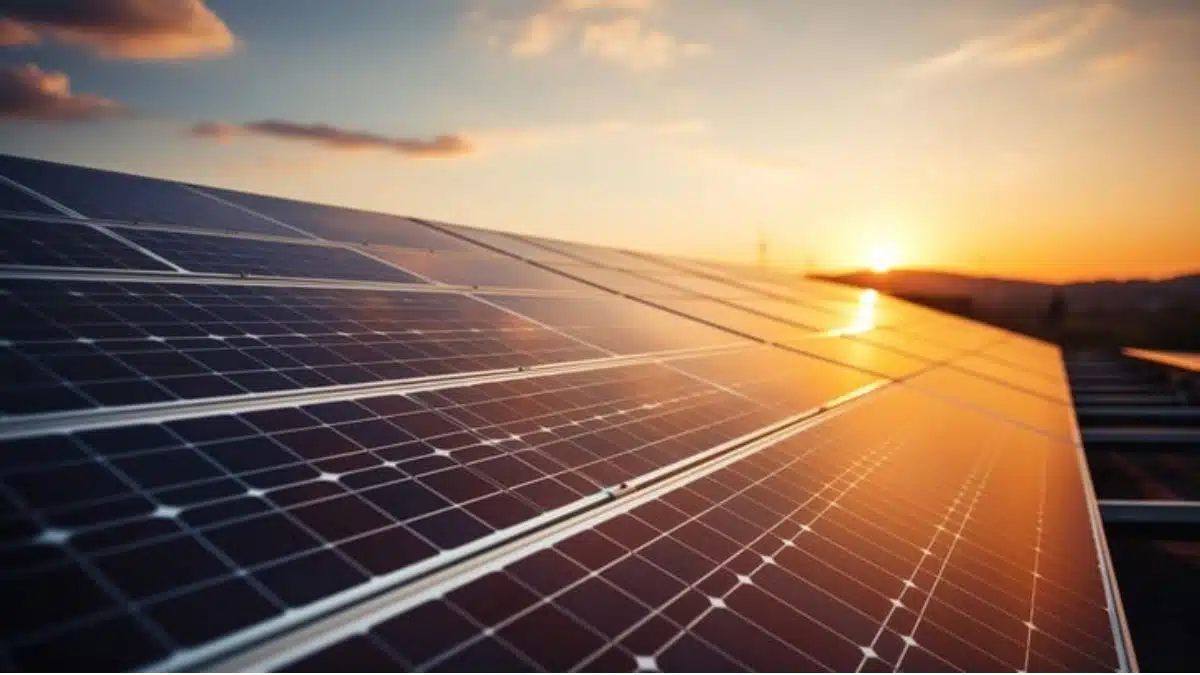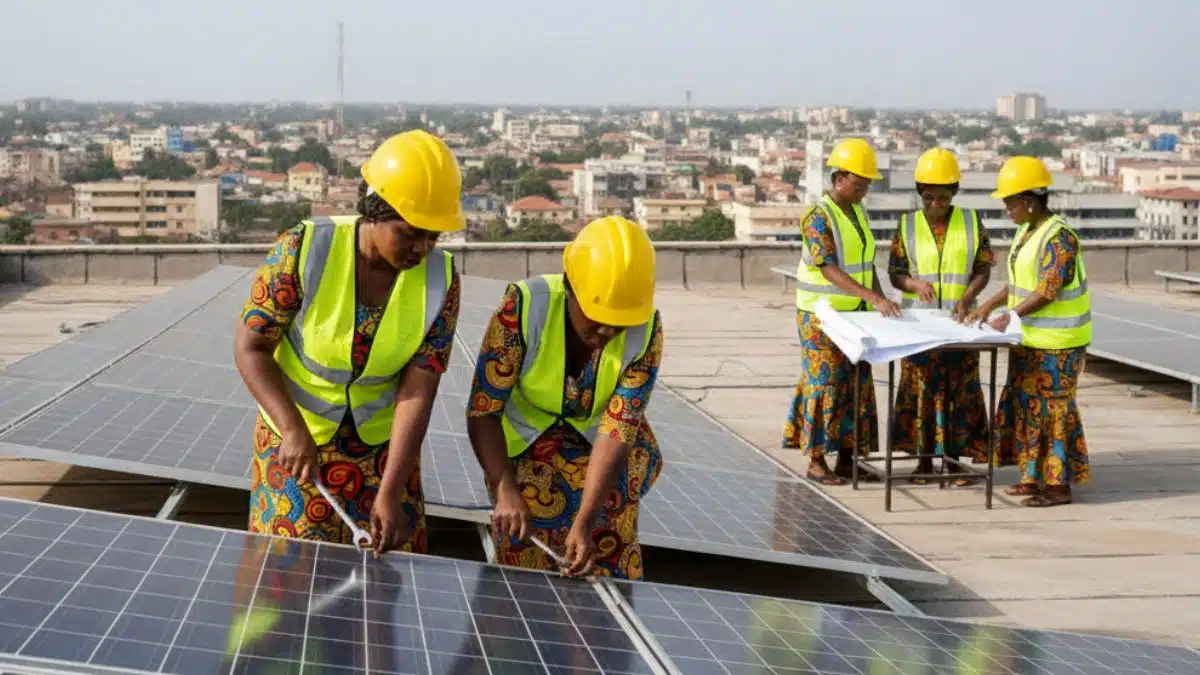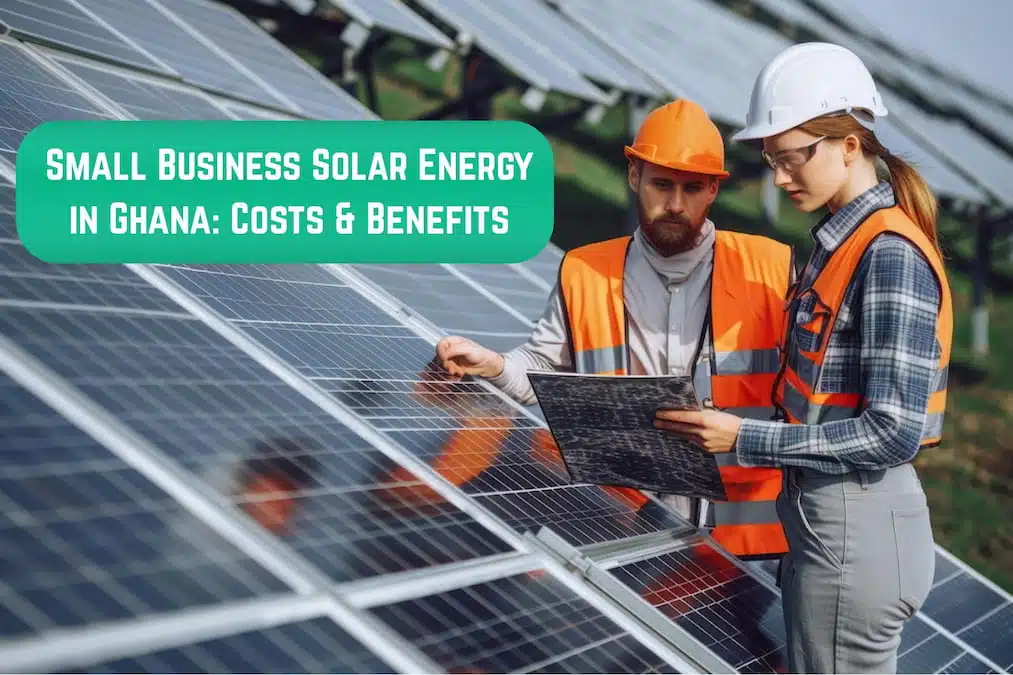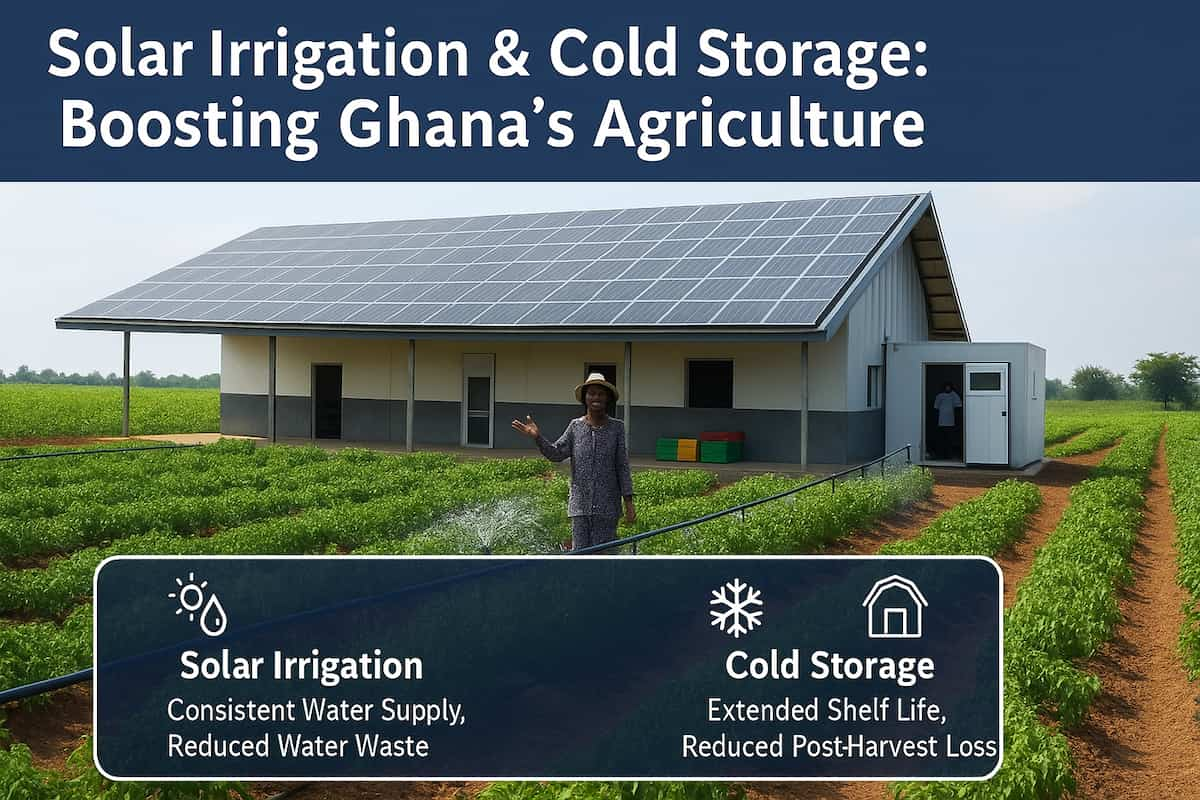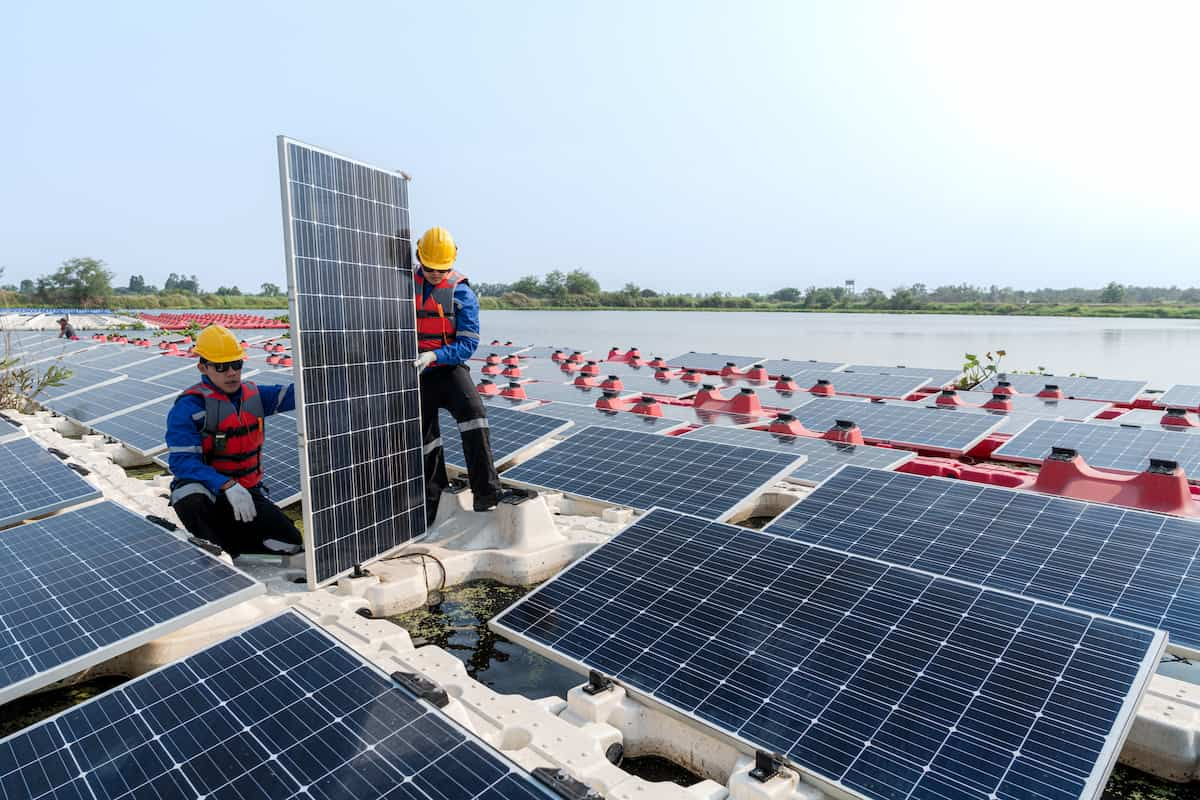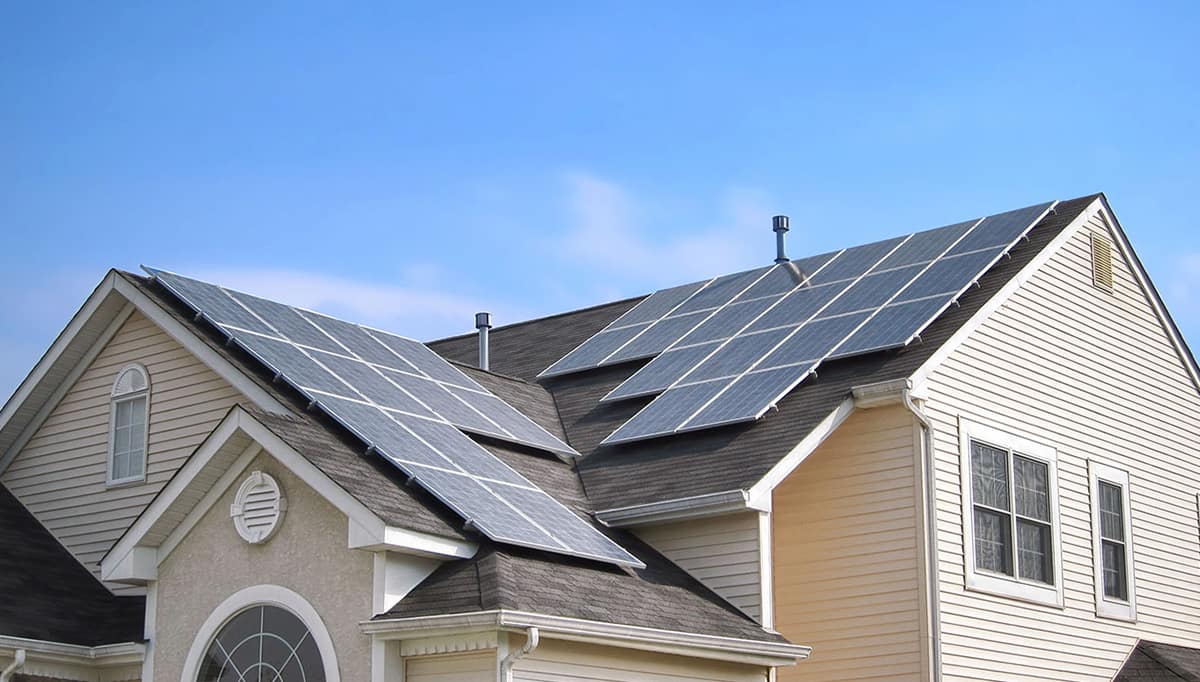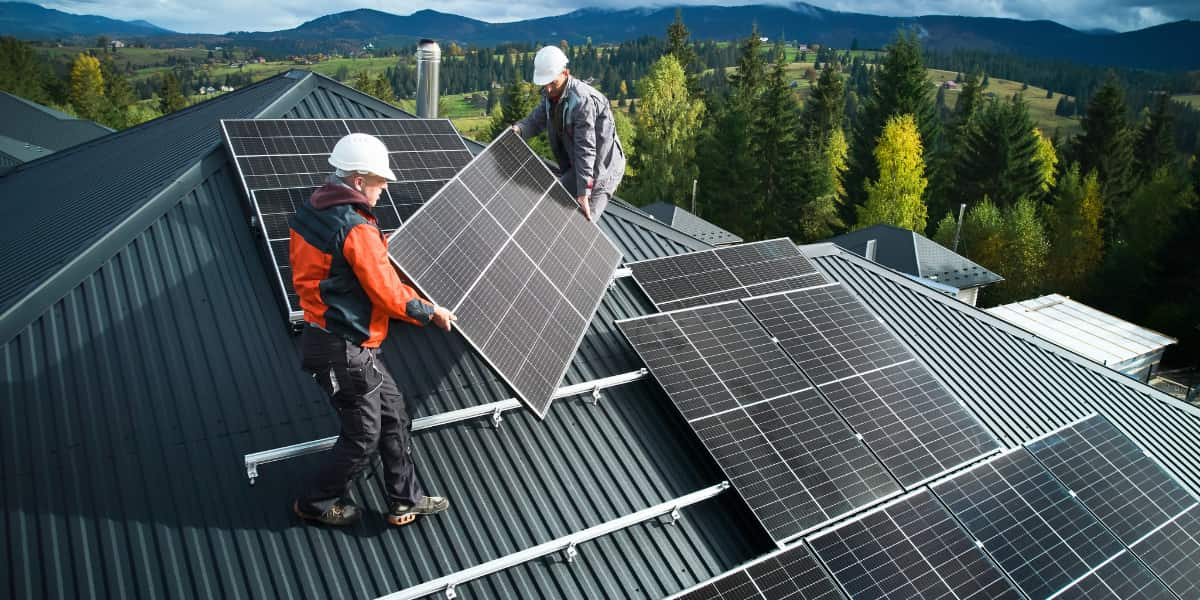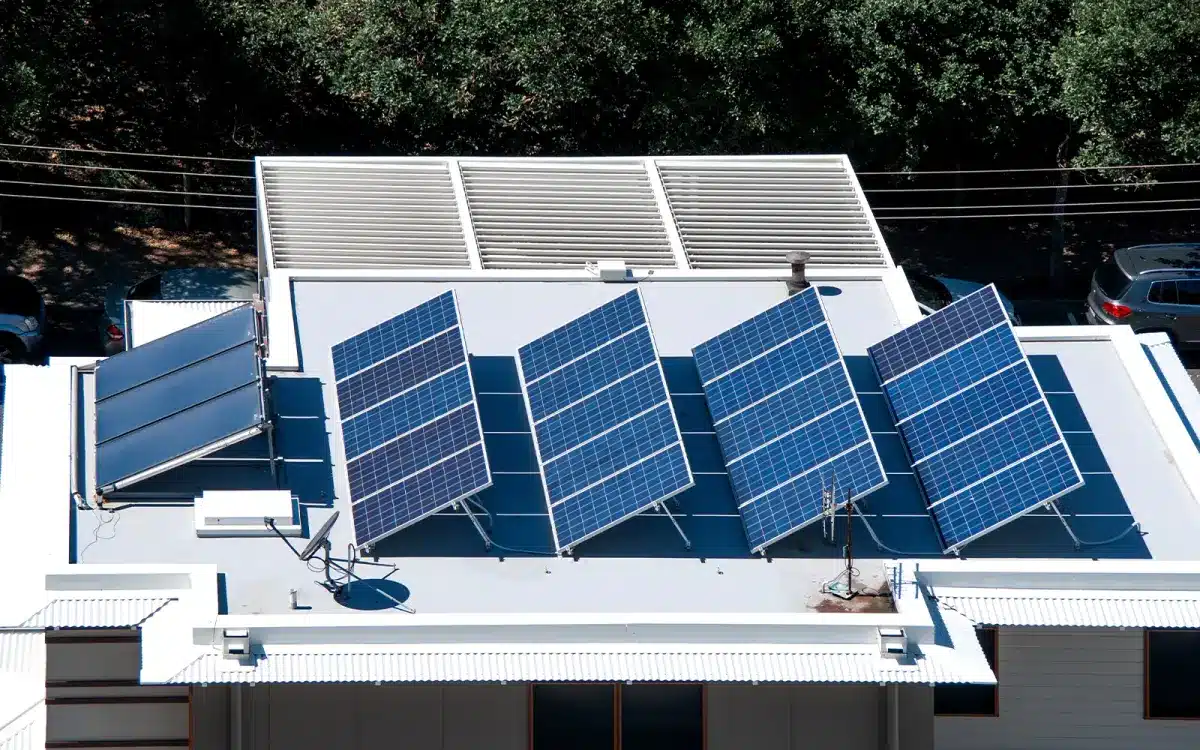Blogs
Renewable Energy Sources in Ghana: Powering a Sustainable Future
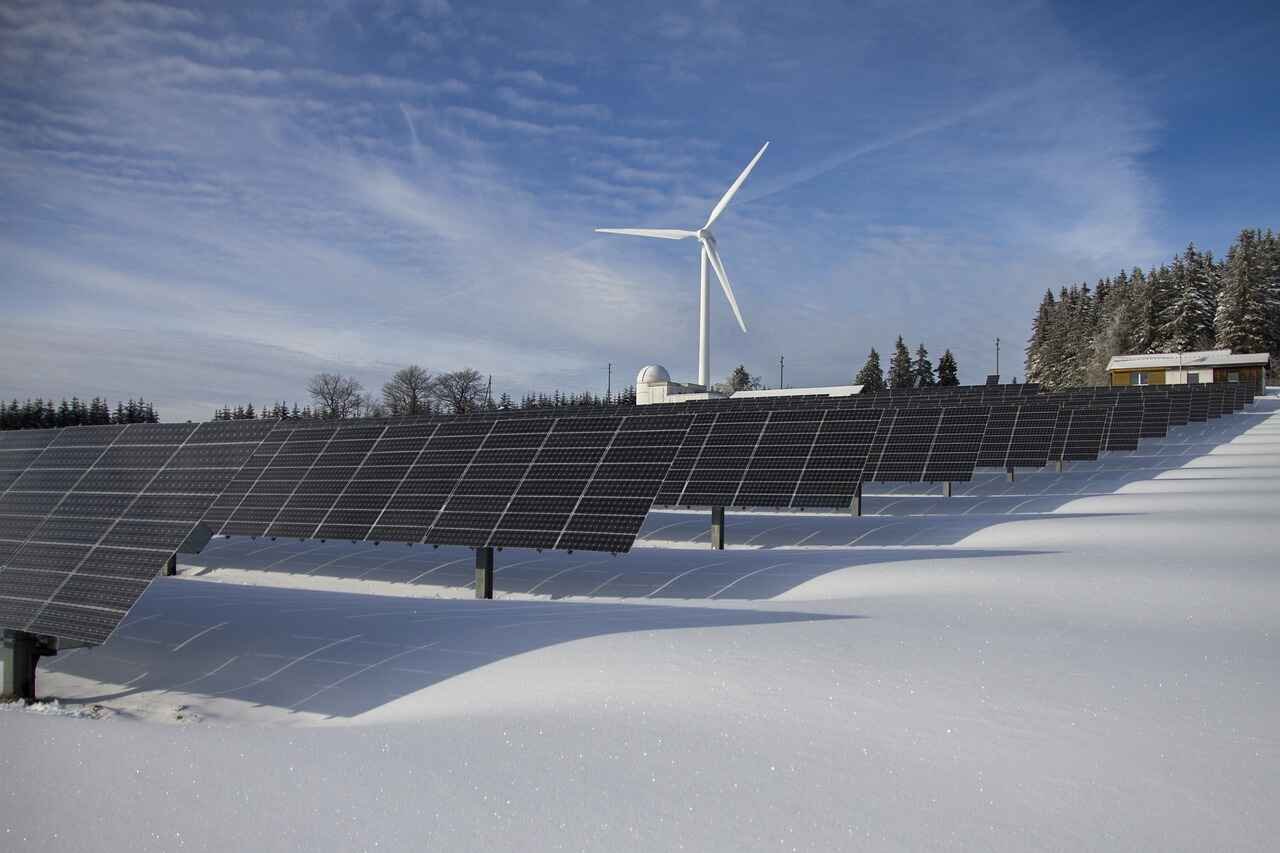
Renewable Energy Sources in Ghana are vital for the country’s sustainable future, offering clean and eco-friendly power solutions from its rich natural resources.
Ghana is rich in renewable energy resources. From solar to wind, the country has vast potential. This blog explores these renewable sources in detail. Ghana aims to reduce its carbon footprint. By turning to renewable energy, it seeks to meet growing power demands.
The country already faces challenges with fossil fuels. High costs and environmental damage are major concerns. Renewable energy provides a solution. It promises lower costs and a cleaner environment. This shift is crucial for sustainable development. Join us as we dive into Ghana’s renewable energy journey. Discover the sources and benefits that can transform its energy landscape.
Introduction To Renewable Energy In Ghana
Ghana is embracing renewable energy sources to meet its growing energy needs. This shift is crucial for the country’s sustainable development and economic growth.
Current Energy Landscape
Ghana’s energy sector relies heavily on hydroelectric power and fossil fuels. The Akosombo Dam, a major hydroelectric power source, provides a significant portion of the country’s electricity. However, dependence on fossil fuels remains high.
Here is a breakdown of the current energy sources in Ghana:
| Energy Source | Percentage |
|---|---|
| Hydroelectric | 40% |
| Fossil Fuels | 45% |
| Renewables | 15% |
Importance Of Renewable Energy
Renewable energy is vital for reducing greenhouse gas emissions. It also helps to diversify the energy mix, enhancing energy security.
By investing in renewable energy, Ghana can achieve several benefits:
- Environmental Protection: Reduces pollution and conserves natural resources.
- Economic Growth: Creates jobs and stimulates local economies.
- Energy Independence: Decreases reliance on imported fuels.
Solar, wind, and biomass are among the promising renewable sources in Ghana. These sources offer great potential for sustainable energy production.
Solar Energy Potential
Ghana is increasingly tapping into its abundant solar energy potential. The country receives high levels of solar radiation, making it an ideal location for solar energy projects. These initiatives not only provide clean energy but also contribute to the nation’s energy security and economic growth.
Solar Radiation Levels
Ghana enjoys significant solar radiation levels, which can be harnessed for energy. The average solar radiation ranges between 4.5 to 6.0 kWh/m2/day. This makes solar power a viable option for both urban and rural areas.
Here is a table showcasing the average solar radiation in different regions of Ghana:
| Region | Average Solar Radiation (kWh/m2/day) |
|---|---|
| Greater Accra | 5.5 |
| Ashanti | 5.8 |
| Northern | 6.0 |
| Volta | 5.2 |
Key Solar Projects
Several key solar projects are underway in Ghana. These projects showcase the country’s commitment to renewable energy. Here are some notable initiatives:
- Blue Power Energy Project: A 100 MW solar plant located in the Northern Region.
- Navrongo Solar Plant: A 2.5 MW solar facility that supports local energy needs.
- BXC Solar Power Station: A 20 MW solar farm in the Greater Accra Region.
- Meinergy Solar Project: A 20 MW project contributing to the national grid.
These projects not only enhance energy access but also create jobs and support local communities.
Wind Energy Opportunities
Ghana has a rich potential for wind energy. This makes it a promising area for renewable energy development. The country’s coastal regions and highlands are particularly suitable for wind farms. With the right investments, wind energy can significantly contribute to Ghana’s energy mix.
Wind Resource Mapping
Wind resource mapping is crucial for identifying the best locations for wind farms. Ghana has been conducting detailed wind resource assessments. These studies help pinpoint areas with the highest wind speeds and most consistent wind patterns.
Key areas identified for wind energy include:
- Coastal regions
- Highlands
- Volta region
Accurate wind maps help investors and policymakers make informed decisions. This ensures that wind farms are built in the most efficient locations.
Prominent Wind Farms
Ghana is home to several prominent wind farms. These projects highlight the country’s commitment to renewable energy.
Some notable wind farms include:
| Wind Farm | Location | Capacity (MW) |
|---|---|---|
| Ada Wind Farm | Ada Foah | 50 |
| Keta Wind Farm | Keta | 30 |
| Accra Wind Farm | Accra | 20 |
These wind farms showcase the feasibility of wind energy in Ghana. They also highlight the potential for future projects.
Wind energy can help reduce reliance on fossil fuels. It can also create jobs and stimulate local economies. By investing in wind energy, Ghana can move toward a more sustainable future.
Hydropower Development
Ghana has great potential for renewable energy sources, especially hydropower. With its many rivers, hydropower development plays a crucial role in the country’s energy mix. Hydropower is not only a clean energy source but also helps in reducing Ghana’s reliance on fossil fuels.
Major Hydropower Plants
Ghana is home to several major hydropower plants. These plants are key to the national grid. They provide a significant portion of the country’s electricity.
- Akosombo Dam: This is the largest hydropower plant in Ghana. It has a capacity of 1,020 MW.
- Kpong Dam: Located downstream of Akosombo, it has a capacity of 160 MW.
- Bui Dam: With a capacity of 400 MW, Bui Dam is another major contributor.
Small-scale Hydropower
Small-scale hydropower projects are also important. They provide energy to remote areas. These projects are typically less than 10 MW.
- Tsatsadu Generating Station: This plant has a capacity of 45 kW. It serves the local community.
- Hemang Generating Station: This plant has a capacity of 1.3 MW. It helps in local electrification.
Small-scale hydropower is cheaper and easier to maintain. It is ideal for rural electrification in Ghana.
| Plant Name | Capacity (MW) | Location |
|---|---|---|
| Akosombo Dam | 1,020 | Volta River |
| Kpong Dam | 160 | Volta River |
| Bui Dam | 400 | Black Volta River |
| Tsatsadu Generating Station | 0.045 | Wli Waterfalls |
| Hemang Generating Station | 1.3 | Pra River |
Biomass And Bioenergy
Ghana is rich in renewable energy sources. One of the key sources is biomass. Biomass energy is derived from organic materials. These materials include plants and animal waste. Bioenergy, on the other hand, is the energy produced from biomass. This form of energy is both sustainable and renewable. It plays a crucial role in reducing carbon emissions. Below, we explore two main aspects of biomass and bioenergy in Ghana.
Agricultural Residues
Agricultural residues are a significant source of biomass in Ghana. These residues come from crops such as maize, rice, and cassava. After harvesting, large amounts of plant material remain. This plant material can be converted into bioenergy. Using agricultural residues helps reduce waste. It also provides farmers with additional income.
Some common agricultural residues include:
- Maize stalks and cobs
- Rice husks
- Cassava peels
These residues are often left to rot or are burned. But, they can be transformed into valuable energy. This process involves converting the residues into biofuels. Biofuels include biogas and bioethanol. These fuels are eco-friendly and reduce reliance on fossil fuels.
Waste-to-energy Projects
Waste-to-energy projects are gaining traction in Ghana. These projects convert waste materials into energy. They help manage waste and provide clean energy. Municipal solid waste is a key resource for these projects. Organic waste from households and industries is used. This waste is processed to produce biogas.
Waste-to-energy projects have many benefits:
- Reduce landfill waste
- Generate renewable energy
- Improve waste management practices
One notable project is in Accra. The city has a waste-to-energy plant. This plant processes tonnes of waste daily. It produces biogas and electricity. Such projects are crucial for sustainable development. They help cities manage waste and reduce pollution.
In summary, biomass and bioenergy are vital in Ghana. They offer sustainable energy solutions. Agricultural residues and waste-to-energy projects play key roles. They help reduce waste and provide renewable energy. Ghana continues to explore these avenues for a greener future.
Geothermal Energy Prospects
Ghana is exploring various renewable energy sources. Geothermal energy is one of the promising options. This energy comes from the heat stored beneath the Earth’s surface. It is a sustainable and clean energy source. Let’s delve into the prospects of geothermal energy in Ghana.
Geothermal Resource Assessment
Before utilizing geothermal energy, a thorough assessment is needed. Geothermal resource assessment involves several steps:
- Identifying potential geothermal sites
- Conducting geological surveys
- Measuring heat flow and temperature gradients
Ghana’s Geological Survey Department has started these assessments. Early results show promising geothermal sites in the Volta region.
Pilot Projects
Pilot projects are crucial for testing geothermal potential. Ghana has initiated some pilot projects to explore this energy source. These projects aim to:
- Assess the feasibility of geothermal energy
- Develop small-scale geothermal plants
- Analyze the economic viability
One of the pilot projects is located near the Kintampo waterfalls. This project will provide valuable data for future geothermal energy developments.
Here is a summary of the key points:
| Key Point | Details |
|---|---|
| Geothermal Resource Assessment | Identifying sites, geological surveys, heat flow measurement |
| Pilot Projects | Feasibility assessment, small-scale plants, economic analysis |
Renewable Energy Act
The Renewable Energy Act was enacted to support the use of renewable energy in Ghana. This act provides a legal framework for the development, management, and utilization of renewable energy. It aims to reduce the country’s reliance on fossil fuels and promote sustainable energy sources.
The Renewable Energy Act includes several key elements:
- Establishment of the Renewable Energy Fund.
- Creation of feed-in tariffs to encourage investment.
- Implementation of renewable energy purchase obligations.
- Promotion of research and development in renewable technologies.
Challenges And Solutions
Ghana has great potential for renewable energy. Yet, there are challenges that need addressing. Overcoming these challenges will unlock the potential of renewable energy sources in ghana. Here we explore some of these challenges and their solutions.
Infrastructure Limitations
Ghana’s infrastructure is not fully ready for renewable energy. The national grid has limited capacity. Many rural areas lack access to electricity. These limitations hinder the expansion of renewable energy projects.
To address these challenges, investment in infrastructure is crucial. This involves upgrading the national grid. Building new transmission lines to rural areas is also important. Public-private partnerships can help fund these projects. Developing mini-grids can provide electricity to remote areas.
Technological Advancements
Advancing technology is key to renewable energy growth. Ghana needs modern, efficient equipment. Outdated technology can be a barrier. It can lead to higher costs and inefficiencies.
Investing in research and development is essential. This will help bring the latest technology to Ghana. Training local engineers and technicians is also important. They need to understand and maintain new technology. Collaborating with international experts can provide valuable knowledge and resources.
Here is a summary of the challenges and solutions:
| Challenges | Solutions |
|---|---|
| Limited infrastructure | Invest in grid upgrades and mini-grids |
| Outdated technology | Invest in modern equipment and training |
By addressing these challenges, Ghana can harness the power of renewable energy. This will lead to a more sustainable future for the country.
Future Outlook
The future of renewable energy sources in Ghana looks promising. Various projects and investments indicate a positive trend. This section explores the projected growth and investment opportunities in Ghana’s renewable energy sector.
Projected Growth
Ghana is on a path to increase its use of renewable energy. The government has set ambitious targets. By 2030, the aim is to have 10% of the energy mix from renewables. This includes solar, wind, and bioenergy.
Currently, Ghana’s energy grid relies heavily on hydroelectric power. Solar energy is quickly gaining traction. Many projects are under development. The potential for wind energy is also being explored.
According to the Energy Commission of Ghana, the country has over 4,000 MW of untapped solar power potential. Wind energy potential is estimated at 5,600 MW. These figures highlight the significant opportunities for growth in the sector.
Investment Opportunities
Investors have many opportunities in Ghana’s renewable energy sector. These include tax holidays and duty exemptions.
Several large-scale solar projects are underway. The Nzema Solar Project is one of the largest in West Africa. It aims to produce 155 MW of power.
Wind energy projects are also attracting interest. The Ayitepa Wind Farm is a notable example. It will generate around 225 MW of power.
Here’s a table summarizing some key investment opportunities:
| Project | Energy Type | Capacity (MW) |
|---|---|---|
| Nzema Solar Project | Solar | 155 |
| Ayitepa Wind Farm | Wind | 225 |
Small and medium enterprises (SMEs) can also benefit. Solar water heaters, solar lighting, and solar pumps are in demand. SMEs can tap into this market.
Investors should consider the following:
- Ghana’s stable political environment
- Growing demand for clean energy
Investing in Ghana’s renewable energy sector promises returns and sustainable development. The future is bright for green energy in Ghana.
Community And Social Impact
Renewable energy is transforming communities in Ghana. It is not just about electricity, but also about people. The community and social impact of renewable energy projects are profound. They bring hope and opportunity to many. Below, we explore how renewable energy is creating jobs and improving the quality of life for Ghanaians.
Job Creation
Renewable energy projects in Ghana are creating numerous jobs. These jobs span various sectors and skill levels. Some key areas include:
- Construction: Building solar farms and wind turbines requires many hands.
- Maintenance: Renewable energy systems need regular upkeep.
- Technical Support: Skilled workers are needed to install and manage systems.
These jobs offer stable employment for many. They provide good wages and benefits. This stability helps families thrive.
Improved Quality Of Life
Access to reliable energy improves lives in many ways. Here are some key benefits:
- Education: Schools can stay open longer with reliable electricity. This allows more study time for students.
- Healthcare: Clinics can store vaccines and run equipment. This leads to better healthcare services.
- Economic Growth: Businesses can operate more efficiently. This leads to economic development and prosperity.
Reliable energy also reduces the reliance on polluting sources. This means cleaner air and better health for all. Renewable energy is a win-win for communities and the environment.
Frequently Asked Questions
What Are The Main Renewable Energy Sources in Ghana?
Ghana’s main renewable energy sources include solar power, wind energy, hydroelectric power, and biomass. Solar power is particularly popular due to abundant sunlight. Hydropower also contributes significantly, thanks to the Akosombo Dam.
How Does Solar Energy Benefit Ghana?
Solar energy reduces electricity costs and dependence on fossil fuels. It is also environmentally friendly. The availability of sunlight in Ghana makes solar power a reliable energy source, supporting rural electrification.
What Is The Role Of Hydroelectric Power In Ghana?
Hydroelectric power is crucial for Ghana’s energy supply. The Akosombo Dam is a major source of hydroelectricity. It provides a significant portion of the country’s electricity needs and supports industrial and residential power requirements.
Is Wind Energy Viable In Ghana?
Yes, wind energy is viable in Ghana, especially in coastal areas. The wind speeds in these regions are suitable for wind power generation. Wind energy projects are being developed to diversify the energy mix.
Conclusion
Renewable energy holds great promise for Ghana’s future. It can provide clean, sustainable power. Solar, wind, and hydro sources offer viable options. These energies reduce reliance on fossil fuels. They also create jobs and improve health. Ghana can lead by embracing renewable energy.
The journey requires commitment and investment. But the benefits are clear. A greener, healthier Ghana awaits.







